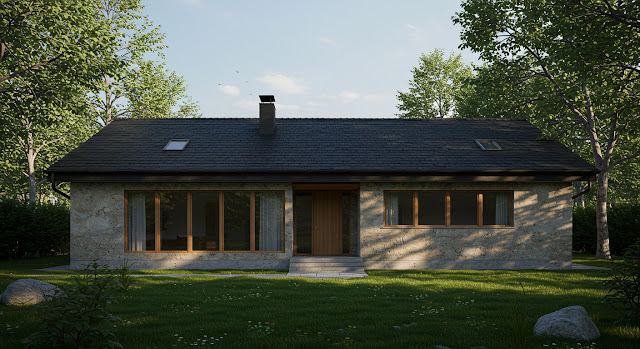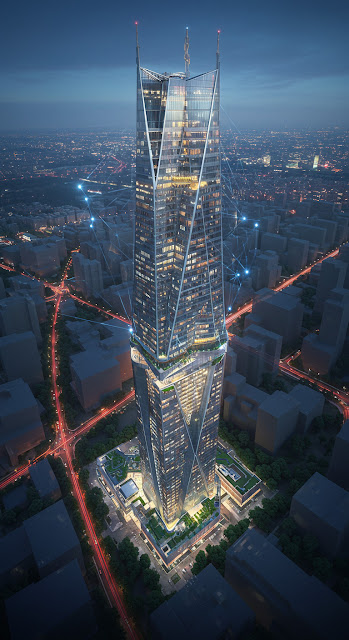Bjarke Ingels’ Innovative Approach to Sustainable Architecture
Bjarke Ingels, the Danish architect and founder of the architectural firm BIG (Bjarke Ingels Group), has revolutionized how sustainability and design can coexist—not only efficiently, but also playfully and boldly. With his signature philosophy that “sustainability should be design-driven, not moralistic,” Ingels has emerged as one of the most influential voices in contemporary architecture. His work bridges utopian thinking with pragmatic solutions, blending environmental responsibility with social, economic, and cultural dimensions.
This article explores Bjarke Ingels’ innovative approach to sustainable architecture, highlighting his major projects, design philosophy, and impact on the future of urban living.
A Philosophy of “Hedonistic Sustainability”
At the heart of Ingels’ architectural vision is the concept of hedonistic sustainability—the idea that environmentally responsible buildings don’t have to be restrictive, austere, or dull. Instead, they can enhance the quality of life while benefiting the planet.
“Sustainability is not a moral sacrifice but a design challenge,” Ingels has said. “It should increase the quality of life, not reduce it.”
This principle is evident across his projects, where energy efficiency, adaptive reuse, and green technology are integrated with aesthetics, fun, and functionality.
Key Sustainable Projects
1. CopenHill (Amager Bakke), Copenhagen
Perhaps the clearest expression of Ingels’ hedonistic sustainability is CopenHill, a waste-to-energy plant topped with a year-round ski slope and hiking trail. It not only processes 440,000 tons of waste annually but also supplies clean energy to 150,000 households—while offering a recreational space in the heart of the city.
It’s an architectural manifesto: a building that redefines what infrastructure can be, proving that utility and leisure can coexist.
2. 8 House, Copenhagen
This mixed-use residential building combines affordable housing, retail, and office space in a figure-eight layout that encourages community interaction and walkability. It includes rooftop gardens, natural ventilation systems, and a spiraling pathway that allows residents to bike from the street to the upper levels, eliminating elevators and reducing energy use.
3. VIA 57 West, New York City
A hybrid between a European courtyard building and a Manhattan skyscraper, VIA 57 West introduces daylight and green space into dense urban housing. The pyramid-like design optimizes solar access and views, creating a sustainable, high-density living experience in a traditionally vertical cityscape.
4. The Oceanix City Concept
Presented at the UN, Oceanix is a vision for floating cities designed to adapt to rising sea levels and urban population growth. With self-sustaining systems, renewable energy, and modular design, the project embodies resilience and climate-conscious urban planning.
Design Methods and Sustainability Principles
🔹 Form Follows Planet
Ingels frequently challenges the “form follows function” mantra. Instead, he allows form to follow environmental logic—maximizing light, air flow, and land use without sacrificing style.
🔹 Integration of Nature
Green roofs, public parks, and gardens are not afterthoughts in BIG’s projects; they’re central elements. This fosters biodiversity, improves air quality, and creates human-centric environments.
🔹 Technology and Flexibility
Ingels embraces parametric design tools, data modeling, and flexible materials to optimize performance and future-proof his buildings. His structures often respond dynamically to climate, use, and even the evolving needs of residents.
🔹 Human-Scaled Urbanism
Rather than imposing top-down, monolithic solutions, Ingels emphasizes livability and user experience. He sees cities as ecosystems that should be engaging, inclusive, and adaptable.
Criticism and Challenges
While widely praised, some critics argue that Ingels’ architecture can be more playful than practical, especially when his bold forms complicate maintenance or inflate budgets. Others question whether his large-scale developments truly democratize urban space, or subtly cater to commercial interests.
Nonetheless, even skeptics acknowledge his commitment to rethinking how architecture interfaces with climate change, urban growth, and human joy.
Legacy and Future Outlook
Bjarke Ingels has succeeded in making sustainability desirable, not just necessary. Through bold forms, multidisciplinary collaboration, and a sense of humor, he challenges the idea that green architecture must be self-sacrificial. His work continues to inspire a generation of architects to approach climate solutions with imagination, optimism, and rigor.
As cities face escalating environmental pressures, the BIG model of future-forward, humanistic, and resilient design is not just visionary—it’s essential.











.jpg)




_1.jpg)
_2.jpg)
_1.jpg)
_2.jpg)
_1.jpg)
_1.jpg)
_2.jpg)
_1.jpg)
_2.jpg)
_1.jpg)
_2.jpg)
_2.jpg)






















